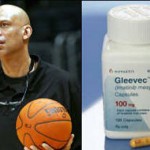Sleep Awareness Week Part 4: Caffeine, Cat Naps, and Dreams

Americans cope with sleepiness by drinking caffeine and taking naps. The average person on a weekday drinks about three 12-ounce caffeinated beverages. This was similar in all age groups.
According to the National Sleep Foundation, napping is common in all age groups, but more than half of generation Y and Z’ers say they take at least one nap during the work week/school week compared to about forty percent of generation X’ers and baby boomers .
Those not getting enough sleep paid a price for their inadequate sleep, citing that it affects their mood, their family life or home responsibilities, and their social and sexual life. Three fourths said that sleepiness affected their work. Sleepiness also played a factor in safe driving practices:
Half of generation Y’ers (50%) say they drove while drowsy at least once in the past month. More than a third of generation X’ers (40%) and approximately a third of generation Z’ers (30%) and baby boomers (28%) also say so. A staggering number, about one in ten, of generation X’ers (12%), generation Y’ers (12%) and generation Z’ers (8%) say they drive drowsy once or twice a week.
Dreaming and REM Sleep
We typically spend more than 2 hours each night dreaming. Scientists do not know much about how or why we dream. Sigmund Freud, who greatly influenced the field of psychology, believed dreaming was a “safety valve” for unconscious desires. Only after 1953, when researchers first described REM in sleeping infants, did scientists begin to carefully study sleep and dreaming. They soon realized that the strange, illogical experiences we call dreams almost always occur during REM sleep. While most mammals and birds show signs of REM sleep, reptiles and other cold-blooded animals do not.
REM sleep begins with signals from an area at the base of the brain called the pons . These signals travel to a brain region called the thalamus, which relays them to the cerebral cortex – the outer layer of the brain that is responsible for learning, thinking, and organizing information. The pons also sends signals that shut off neurons in the spinal cord, causing temporary paralysis of the limb muscles. If something interferes with this paralysis, people will begin to physically “act out” their dreams – a rare, dangerous problem called REM sleep behavior disorder.
REM sleep stimulates the brain regions used in learning. This may be important for normal brain development during infancy, which would explain why infants spend much more time in REM sleep than adults . Like deep sleep, REM sleep is associated with increased production of proteins. One study found that REM sleep affects learning of certain mental skills. People taught a skill and then deprived of non-REM sleep could recall what they had learned after sleeping, while people deprived of REM sleep could not.
Some scientists believe dreams are the cortex’s attempt to find meaning in the random signals that it receives during REM sleep. The cortex is the part of the brain that interprets and organizes information from the environment during consciousness. It may be that, given random signals from the pons during REM sleep, the cortex tries to interpret these signals as well, creating a “story” out of fragmented brain activity.
Source: National Institute of Neurological Diseases and Stroke



























0 comments